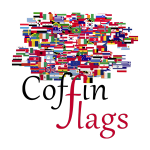Description
 Barbados is an island country in the Lesser Antilles of the West Indies, in the Caribbean region of North America. It is 34 kilometres (21 miles) in length and up to 23 km (14 mi) in width, covering an area of 432 km2 (167 sq mi). It is situated in the western area of the North Atlantic and 100 km (62 mi) east of the Windward Islands and the Caribbean Sea; therein, Barbados is east of the Windwards, part of the Lesser Antilles, roughly at 13°N of the equator. It is about 168 km (104 mi) east of both the countries of Saint Lucia and Saint Vincent and the Grenadines 180 km (110 mi) south-east of Martinique and 400 km (250 mi) north-east of Trinidad and Tobago. Barbados is outside the principal Atlantic hurricane belt. Its capital and largest city is Bridgetown.
Barbados is an island country in the Lesser Antilles of the West Indies, in the Caribbean region of North America. It is 34 kilometres (21 miles) in length and up to 23 km (14 mi) in width, covering an area of 432 km2 (167 sq mi). It is situated in the western area of the North Atlantic and 100 km (62 mi) east of the Windward Islands and the Caribbean Sea; therein, Barbados is east of the Windwards, part of the Lesser Antilles, roughly at 13°N of the equator. It is about 168 km (104 mi) east of both the countries of Saint Lucia and Saint Vincent and the Grenadines 180 km (110 mi) south-east of Martinique and 400 km (250 mi) north-east of Trinidad and Tobago. Barbados is outside the principal Atlantic hurricane belt. Its capital and largest city is Bridgetown.
The national flag of Barbados was officially adopted on 30 November 1966, the island’s first Independence Day, when it was raised for the first time by Lieutenant Hartley Dottin of the Barbados Regiment. It consists of a triband of two bands of ultramarine, which are said to stand for the ocean surrounding the country and the sky, separated by a golden middle band, which represents the sand. A black trident head, commonly called the broken trident, is centred in the golden band, and the fact that the staff is missing is significant. The trident symbol was taken from Barbados’ colonial badge, where the trident of Poseidon is shown with Britannia holding it. The broken lower part symbolises a symbolic break from its status as a colony. The three points of the trident represent the three principles of democracy: 1) government of the people, 2) government for the people, and 3) government by the people.







